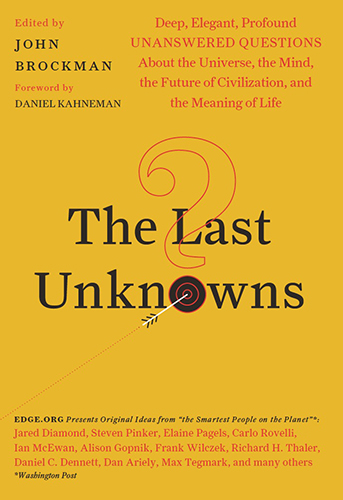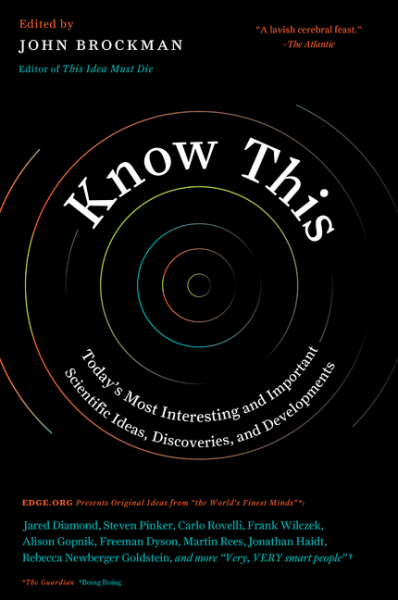Annual Question:
The most long-range portentous event of 2015 was NASA’s New Horizons spacecraft arrowing by Pluto, snapping clean views of the planet and its waltzing moon system. It carries an ounce of Clyde Tombaugh's ashes, commemorating his discovery of Pluto in 1930. Tombaugh would have loved seeing the colorful contrasts of this remarkable globe, far out into the dark of near-interstellar space. Pluto is now a sharply-seen world, with much to teach us.
As the spacecraft zooms near an iceteroid on New Year’s Day, 2019, it will show us the first member of the chilly realm beyond, where primordial objects quite different from the wildly eccentric Pluto also dwell. These will show us what sort of matter made up the early disk that clumped into planets like ours—a sort of family tree of worlds. But that’s just an appetizer.
New Horizons is important not just for completing our first-look at every major world in the solar system. It points outward, to a great theatre in the sky, where the worlds of the galaxy itself are on display.
Beyond Pluto looms a zone where the Sun’s mass acts as a giant lens, its gravitation focusing the light of other stars to a small area. Think of it as gravity gathering starlight into an intense pencil, focused down as dots on a chilly sphere. Einstein calculated such gravitational bending of light in 1912, though Newton knew the effect should occur in his own theory of mechanics and optics.
Images of whole galaxies made by this effect were not discovered until 1988. Such magnification of light from a star and the planets near it naturally creates a telescope of unparalleled power. It can amplify images by factors that can vary from a hundred million to a quadrillion, depending on frequency.
This suggests using such power to study worlds far across the interstellar reaches. We have already detected over two thousand planets around other stars, thanks to the Kepler mission and other telescopes. We can sense the atmospheres of some, when they pass across our view of their stars, silhouetted against that glare. Many more will come.
Our space telescopes envisioned for the next several decades can only tease out information about a planet at interstellar distances by studying how light reflects or absorbs changes. At best, such worlds will be dots of faint light.
But at the lensing distance, under enormously better resolution, we can see the worlds themselves—their atmospheres and moons, their seas and lands, perhaps even their cities.
Hearty New Horizons now zooms along at about 15 kilometers a second, or more usefully said, at about three Astronomical Units (AU, the distance between Earth and our sun) in a year, relative to the sun. The focus spot of the sun is 550 AU out, as Einstein predicted in 1936. New Horizons will take 180 years to get to that focus and be long dead as its nuclear power supply fades. So future missions to put a telescope out there demands speeds ten or more times faster. (Voyager, flying after thirty-eight plus years, is only 108 AU away from earth.)
We know of ways to propel spacecraft to such speeds. Most involve flying near the sun and picking up velocity by firing rockets near it, or getting a boost from its intense light using unfurled solar sails, and other astro-tricks. Those feats we can fashion within decades, if we wish.
Our goal could be to put an observing spacecraft that can maneuver out at the focus of “God’s zoom lens”—a 70 billion mile long telescope that light takes over three days to traverse. An observing spacecraft could see whatever is behind the sun from it, many light years away.
This would vastly improve our survey of other worlds, to pick off strings of stars and examine their planets. Using the sun as a lens works on all wavelengths, so we could look for signs of life—say, oxygen in an atmosphere—and perhaps even eavesdrop on aliens’ radio stations, squawking into the galactic night.
A first, such a telescope could scrutinize Alpha Centauri’s planets, if it has some, the next big step before trying to travel there. The craft could trace out a spiral pattern perpendicular to its outward path, slightly shifting its position relative to scan the Alpha Centauri system. Then look further still—because the focus effect remains beyond 550 AU, as a spacecraft moves outward, still seeing the immense magnifications.
New Horizons maybe the best-named spacecraft of all, for it does indeed portend fresh, bold perspectives.















